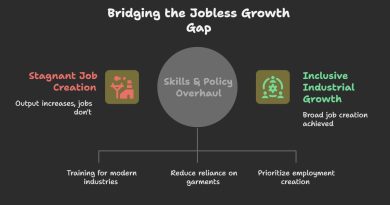Bangladesh recorded its highest quarterly net foreign direct investment (FDI) in over two years between January and March 2025, signalling renewed investor confidence after years of sluggish inflows driven by political tensions and energy supply challenges.
According to Bangladesh Bank data, FDI reached $1.58 billion in the first quarter of 2025. Of this, $711 million was repatriated, leaving a net inflow of $865 million — more than double the $403 million seen in the same period last year and 76% higher than the $490 million received in the October–December quarter of 2024.
FDI inflows include equity capital, reinvested earnings, and intra-company loans. Notably, intra-company loans surged by 147% year-on-year to $627 million, while equity capital rose by 62%. By contrast, reinvested earnings — an indicator of confidence among existing investors — fell 24% to $194.71 million.
Economists and industry leaders suggest the spike in intra-company loans partly reflects multinationals seeking to bypass higher local borrowing costs, using funds from parent companies to finance operations or expansions without tapping domestic banks.
Ashik Chowdhury, Executive Chairman of the Bangladesh Investment Development Authority (Bida), said many of these inflows stemmed from earlier investment decisions, although faster approvals by Bida and Bangladesh Bank had helped sustain momentum.
Still, analysts urge caution. “Industrial unrest and political instability eased in early 2025, boosting investor sentiment,” said M Masrur Reaz, chairman of local think tank Policy Exchange Bangladesh. “But it’s vital to verify whether these inflows represent fresh capital or are mainly financial adjustments.”
Foreign Investors Chamber of Commerce and Industry (FICCI) President Zaved Akhtar, who is also Chairman and Managing Director of Unilever Bangladesh, echoed this concern. “If intra-company loans only cover operational costs or liquidity gaps, the broader economy gains little. But if these funds support local investment, they can create jobs and spur growth,” he said, noting that equity capital still makes up just 30% of total inflows.
Selim Raihan, Executive Chairman of the South Asian Network on Economic Modelling (Sanem), added that while the net FDI inflow is encouraging, the heavy reliance on intra-company loans rather than greenfield investments signals caution. “These loans often reflect parent companies managing short-term liquidity or crisis responses rather than new commitments,” he said.
Meanwhile, outflows also edged higher to $711 million, up from $651 million in the first quarter of 2024, further highlighting the mixed picture.
Chowdhury acknowledged investor hesitation in late 2024 as many waited to see whether the interim government would deliver on its commitments. “They’ve now seen performance that has helped rebuild confidence,” he said. “To keep this momentum, accelerating reform efforts is essential to attract sustained, long-term FDI.”






